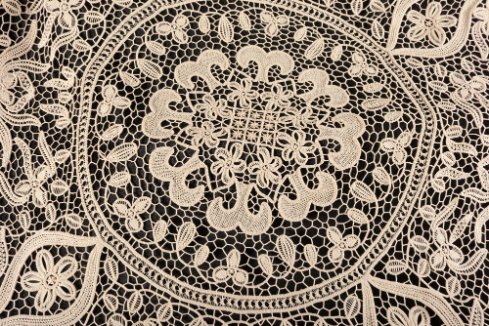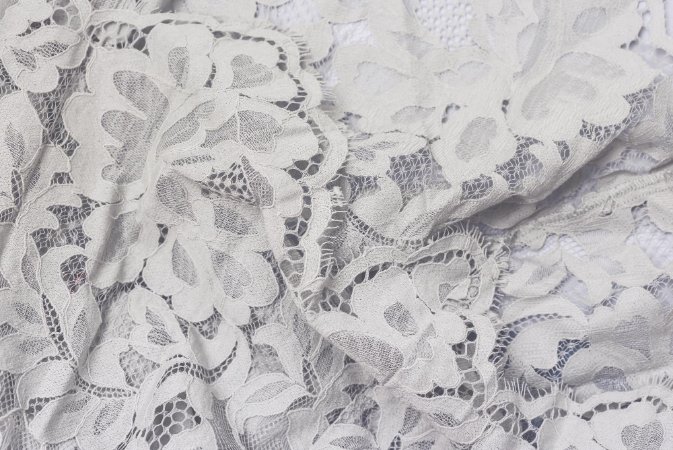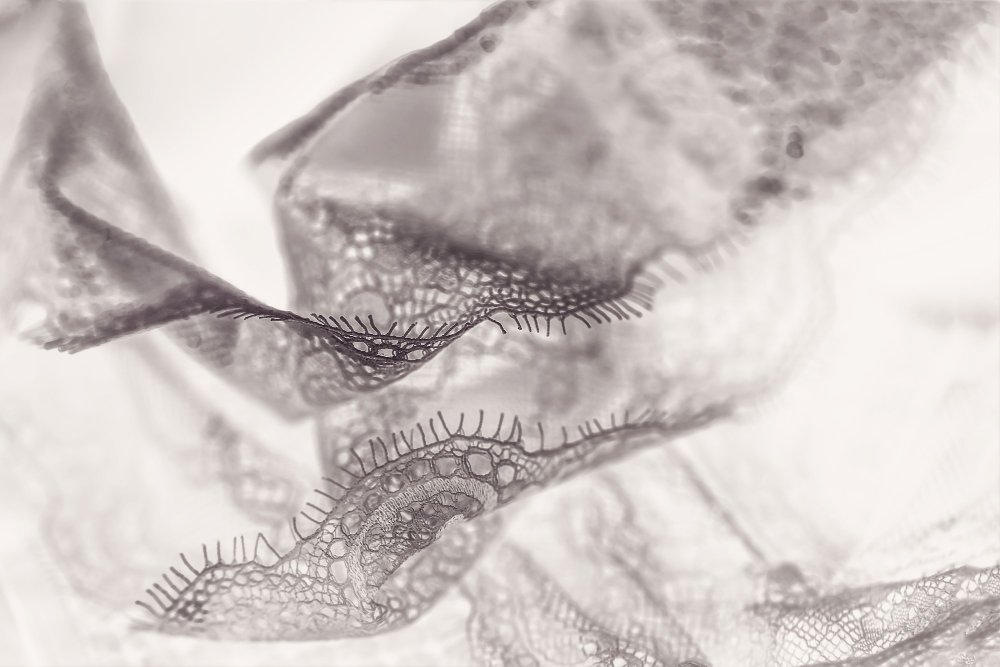Discover the intricate world of Maltese bizzilla – from ancient Mediterranean traditions to modern workshops and authentic buying guides
Table of Contents
What is Maltese Lace?

Maltese lace, known locally as bizzilla, is a distinctive style of guipure lace that originated in the Mediterranean archipelago of Malta. Unlike other lace fabric types, Maltese lace is a continuous bobbin lace technique worked on a tall, upright pillow called a trajbu.
Key Facts: A single square meter of authentic Maltese lace can take over 200 hours to complete, making it one of the most time-intensive textile crafts in the world. This incredible dedication to detail is what sets it apart from machine-made alternatives.
What makes Maltese lace unique is its combination of geometric precision and organic flowing patterns. The technique involves using wooden bobbins (combini) made from fruitwood, manipulated across a vertical straw pillow to create intricate designs that tell stories of Mediterranean culture and resilience.
Distinctive Features of Maltese Lace
- Eight-pointed Maltese Cross: The signature symbol that distinguishes it from other European lace styles
- Wheat ear patterns: Plump, rounded leaf motifs representing abundance
- Plaited braids: Intricate geometric frameworks
- Cream silk threads: Traditional material choice for finest pieces
- Vertical pillow technique: Unique working method different from horizontal needle lace
What is the History of Maltese Lace?
The story of Maltese lace stretches back over 400 years, intertwining with the island’s complex history of cultural exchange and economic survival.
Needle lace first arrived in Malta during the Knights Hospitaller period. One of the earliest surviving examples appears on Cardinal Hugues Loubenx de Verdalle’s tomb (1595) in Valletta’s St. John’s Co-Cathedral, featuring geometric motifs that later became hallmarks of the craft.
The Order of St. John introduced Venetian-style lacemaking techniques to Malta. Knights, clergy, and Maltese aristocracy created high demand for elaborate lace decorations on clothing and furnishings.
Lady Hamilton Chichester revolutionized the industry by partnering with social reformer Sarah Austin to bring skilled Genoese lacemakers to Malta. They taught advanced bobbin lace techniques, transforming the slower needle lace method into the faster, more commercial bobbin technique we know today.
Maltese lace was showcased at London’s Great Exhibition, captivating international audiences. This exposure led to global demand and royal approval from Queen Victoria herself.
Queen Victoria displayed Maltese lace at the Exhibition of Industries in London, cementing its elite status. Her statue in Valletta’s Republic Square shows a lace shawl, honoring this royal endorsement.
The Genoese Connection
The transformation from needle to bobbin lace was crucial for Malta’s textile economy. Genoese artisans brought expertise in geometric patterns and linen thread work, but Maltese craftspeople adapted these techniques with their own cultural symbols. The addition of the eight-pointed Maltese cross in the 1830s was specifically designed to distinguish local work from Genoese imports, creating a unique brand identity.
Did You Know? Victorian crinoline dresses of the mid-19th century demanded elaborate trimmings, and Hamilton Chichester’s workshops perfectly timed their entry into this lucrative market. Maltese lace soon adorned aristocratic wardrobes from London to Vienna.
Characteristics and Craftsmanship
The technical mastery required for Maltese lace sets it apart from other European lace traditions. Every element, from tools to technique, has been refined over generations to achieve both mathematical precision and artistic beauty.
Essential Tools and Materials
Trajbu (Lace Pillow)
A 60cm vertical pillow made from dry straw stalks, wrapped in hessian cloth and covered with cotton, newspaper, and flour paste. The vertical position allows for better tension control during intricate work.
Combini (Bobbins)
Long, thin wooden bobbins made from fruitwood, without the beaded spangles found in other lace traditions. The smooth finish allows for fluid movement across silk threads.
Thread Selection
Premium pieces use fine silk for delicate sheen, while linen handles larger items like tablecloths. Black silk was popular historically, but cream-colored Spanish silk remains the gold standard.
Pattern Planning
Designers sketch angular geometric layouts first, then fill spaces with organic curves. This mathematical approach creates the distinctive tension between structure and fluidity.
Signature Design Elements
Maltese lace patterns follow specific symbolic and aesthetic principles that reflect the island’s cultural heritage:
| Pattern Element | Meaning | Technical Notes |
|---|---|---|
| Maltese Cross | Religious heritage, island identity | Four equal arms, worked in whole stitch |
| Wheat Ears | Abundance, agricultural prosperity | Plump, rounded leaves vs. slender forms in other laces |
| Hexagonal Grids | Mathematical precision, order | Framework for organic motifs |
| Diamond Shapes | Mediterranean landscapes | Created through plaited braids |
Where to Learn Maltese Lace Making Today
Despite modern challenges, several organizations work tirelessly to preserve and teach Maltese lacemaking techniques. Here’s your complete guide to learning this ancient craft.
Educational Institutions
University of Malta – Gozo Campus offers a comprehensive Diploma in Lace Studies, combining historical context with hands-on technique training. They also host an annual Lace Day event featuring workshops and exhibitions.
Specialized Workshops and Organizations
HAJJA Social Enterprise
Focus: Community healing through lacemaking
Format: 3-hour workshops (max 7 people)
Frequency: Monthly sessions
Special: Each workshop teaches one of 8 basic stitches
Malta Lace Guild
Services: Regular classes, newsletter, exhibitions
Established: 2000
Focus: Quality improvement and production promotion
Government Trade Schools
Target: Young learners
Approach: Traditional curriculum
Goal: Craft preservation for future generations
Private Organizations
Society of Arts, Manufactures and Commerce
Format: Evening classes
Level: Various skill levels welcome
Modern Innovation in Teaching
Contemporary instructors like Annamaria Gatt are revolutionizing traditional approaches by incorporating modern materials alongside historical techniques. Students learn to work with synthetic threads, metallic accents, wire, and beads, creating lace artwork that bridges centuries of tradition with current artistic expression.
Watch Traditional Maltese Lace Making in Action
This video showcases the intricate process of making authentic Maltese bobbin lace, featuring both the traditional techniques and a beautiful collection of finished lace items.
Beginner Tutorial: Learn the Basics
Perfect for newcomers to bobbin lace, this tutorial demonstrates fundamental techniques that form the foundation of Maltese lace making.
Learning Tip: Master the 8 fundamental stitches first. HAJJA workshops are designed so you can attend multiple sessions, learning a new stitch each time without repetition. This progressive approach builds confidence while maintaining interest.
Authentic Maltese Lace Buying Guide
With machine-made imitations flooding the market, knowing how to identify genuine Maltese lace is crucial for collectors, enthusiasts, and travelers seeking authentic pieces.
Where to Buy Authentic Pieces
In Malta
Ta’ Qali Craft Village: Near the main stadium, featuring multiple artisan workshops
Ta’ Dbieġi Crafts Centre (Gozo): Specializes in authentic Gozitan lace
Mdina shops: Along the main road to the cathedral
Village doorstep purchases: Direct from artisans in Gozo’s side streets
Online Marketplaces
Etsy: Search for vintage/antique Maltese lace with detailed seller histories
eBay: Wide selection but requires careful authentication
Specialist dealers: Higher prices but better authenticity guarantees
Price Guidelines
| Item Type | Authentic Range (USD) | Factors Affecting Price |
|---|---|---|
| Small doilies | $50-200 | Complexity, age, condition |
| Table runners | $200-800 | Size, pattern intricacy |
| Tablecloths | $500-2000+ | Dimensions, craftsmanship quality |
| Vintage shawls | $300-1500 | Historical significance, condition |
| Antique collars | $150-600 | Era, provenance, rarity |
Collector’s Tip: Museum-quality pieces often come with documentation. The Palazzo Falson Historic House Museum curates exceptional 19th-century examples that provide reference points for authentic characteristics.
Modern Applications and Innovation
Today’s designers are breathing new life into traditional Maltese lace techniques, proving that ancestral skills can thrive through creative adaptation. This evolution demonstrates how cultural preservation and innovation can coexist beautifully.
Contemporary Fashion Integration
Modern fashion designers incorporate lace elements in unexpected ways. Runways now feature jackets with laser-cut lace-inspired panels, while interior designers use enlarged traditional samples as architectural room dividers. The geometric language of Maltese lace translates surprisingly well to contemporary minimalist aesthetics.
Innovation Example: A 2023 New York exhibition showcased wall hangings that combined traditional guipure lace techniques with 3D-printed elements, proving that old skills can shape entirely new forms of artistic expression.
Therapeutic Applications
Organizations like HAJJA have discovered the mental health benefits of lacemaking. The repetitive, meditative nature of bobbin manipulation provides stress relief and therapeutic focus, particularly appealing to younger generations seeking wellness activities that disconnect them from digital distractions.
Artistic Innovations
Contemporary practitioners experiment with materials while respecting traditional techniques:
- Mixed media approaches: Incorporating recycled plastics and metallic threads
- Scale variations: Creating large-scale installations from traditionally small-scale techniques
- Color experimentation: Moving beyond traditional cream and black to explore full spectrums
- Mounted artwork: Traditional lace as fine art on canvas with acrylic or watercolor backgrounds
Hotel Design Integration
Boutique hotels like Casa Ellul celebrate traditional Maltese arts by pairing historic lace with contemporary luxury, creating unique cultural experiences for visitors.
Architectural Applications
French artist Dominique De Beir’s work at The Snop House Boutique Hotel demonstrates how traditional making processes can address modern themes like environmental sustainability.
Educational Integration
Modern lacemaking workshops teach both traditional and innovative approaches, ensuring students understand historical context while exploring creative possibilities.
Sustainable Fashion
Slow fashion advocates embrace lacemaking as an alternative to fast fashion, valuing the time investment and durability of handcrafted pieces.
Cultural and Economic Impact
Maltese lace represents more than decorative craft. It embodies economic empowerment, cultural identity, and international trade relationships that shaped Malta’s position in the global textile market.
Historical Economic Significance
When London’s Crystal Palace hosted the Great Exhibition in 1851, it sparked a revolution for textile artisans worldwide. For Malta, this meant transforming household crafts into export-worthy art that supported entire villages.
Workshops across Malta empowered women with financial independence through skilled labor. Patterns once confined to household items evolved into cultural signatures, preserving community stories across generations.
Global demand led to creative adaptations. English artisans developed “Beds Maltese” (Bedfordshire lace), blending traditional Maltese techniques with local English materials and expanding international markets.
Export demand positioned Malta as a luxury textile trade hub. Commercial potential led British missionaries to copy patterns for reproduction in China and India, though these lacked the cultural authenticity of island-made pieces.
Gender and Social Dynamics
Historically, lacemaking challenged traditional gender roles. While initially women-dominated, historical evidence shows that “mothers, daughters, and all other family members – boys included” participated in mass production for both local and foreign markets. This inclusive approach contributed to the craft’s economic success.
Cultural Preservation: Museums now safeguard original methods, ensuring future generations can study this intersection of artistry and economics. The legacy proves how craftsmanship can shape cultural identities while driving economic progress.
Modern Community: Maltese Lace Making Around the World
The tradition of Maltese lace making has spread globally, with communities of practitioners maintaining the craft far from its Mediterranean origins. Below is a wonderful example of Gozitans in Melbourne, Australia, keeping their cultural heritage alive through traditional lace making demonstrations.
Community Spotlight: Watch Gozitan artisans demonstrate traditional techniques at the Ghannejja Club in Melbourne. View the Facebook video here to see how cultural traditions transcend geographic boundaries, connecting communities worldwide through the shared language of craftsmanship.
Modern Cultural Relevance
Today’s lacemaking community continues this tradition of inclusivity. Contemporary practitioners emphasize that “gender is not the least bit relevant here, and neither is class” – lacemaking remains “a talent that anyone can explore.”
Care and Preservation of Maltese Lace
Proper care ensures that authentic Maltese lace pieces remain beautiful and valuable for generations. Whether you own vintage pieces or contemporary work, following conservation principles protects your investment.
Storage Guidelines
Flat Storage
Store large pieces flat in acid-free tissue paper. Avoid folding, which creates permanent creases in delicate fibers. Use archival boxes for long-term storage.
Climate Control
Maintain stable temperature (65-70°F) and moderate humidity (45-55%). Avoid basements, attics, and areas with temperature fluctuations that cause fiber expansion and contraction.
Light Protection
Display pieces away from direct sunlight and UV exposure. If exhibiting, use UV-filtering glass and rotate displays to minimize cumulative light damage.
Handling Precautions
Clean hands essential. Support the entire piece when moving. Never lift by corners or single points. Use clean, flat surfaces for examination and photography.
Cleaning and Maintenance
Professional conservation is recommended for valuable or antique pieces. For routine maintenance of contemporary lace:
- Gentle dusting: Use soft brush or vacuum with screen protection
- Spot cleaning: Distilled water and pH-neutral detergent only
- Drying: Flat drying on absorbent towels, reshaping while damp
- Never: Machine washing, bleach, dry cleaning, or wringing
Investment Value: Well-preserved authentic Maltese lace appreciates in value over time. Documentation of provenance, age, and authenticity significantly increases collector value. Keep purchase records and any historical information about your pieces.
Frequently Asked Questions
Authentic Maltese lace shows slight irregularities from hand manipulation, uses quality materials (silk, fine linen), and features proper Maltese cross and wheat ear motifs. Avoid pieces with “Made in Malta” labels that feel synthetic or show perfectly uniform patterns – these are likely machine-made imitations.
Maltese lace is distinguished by its eight-pointed cross motif, plump “wheat ear” leaf patterns, and vertical pillow working technique. Unlike Alençon lace or Venetian styles, it uses continuous bobbin technique on an upright trajbu pillow.
A single square meter can take over 200 hours to complete. Smaller pieces like doilies might require 20-50 hours, while large tablecloths can take several months of dedicated work. The time investment explains why authentic pieces command higher prices.
The University of Malta’s Gozo Campus offers a Diploma in Lace Studies, while organizations like HAJJA social enterprise provide monthly workshops. The Malta Lace Guild also offers classes and maintains a network of instructors across the islands.
Traditional pieces use cream-colored Spanish silk for finest work, though black silk was historically popular. Linen is used for larger pieces like tablecloths. Modern innovations include synthetic threads, metallic accents, and even wire for contemporary artistic applications.
Prices vary significantly by size and complexity. Small doilies range from $50-200, table runners $200-800, and large tablecloths can exceed $2000. Antique pieces with provenance command premium prices. Remember: cheap handmade lace doesn’t exist.
Absolutely! Historical records show that “boys included” participated in traditional family lacemaking operations. Modern instructors emphasize that “gender is not the least bit relevant” – lacemaking is a skill anyone can explore and master.
Queen Victoria became a major advocate after viewing Maltese lace at the Great Exhibition of 1851. She later displayed pieces at the 1881 Exhibition of Industries in London. Her statue in Valletta’s Republic Square shows a lace shawl, commemorating this royal endorsement.
Conclusion
Maltese lace stands as a remarkable testament to how traditional craftsmanship can adapt, survive, and thrive across centuries. From its origins in 16th-century Mediterranean culture to its current role in therapeutic wellness and contemporary art, bizzilla continues to weave together stories of resilience, innovation, and cultural pride.
Key Takeaways
For Collectors and Enthusiasts:
- Authentic Maltese lace requires significant time investment (200+ hours per square meter)
- Look for characteristic eight-pointed crosses and wheat ear patterns
- Quality pieces use silk or fine linen with slight hand-worked irregularities
- Beware of cheap imitations with fake “Made in Malta” labels
- Investment value increases with proper documentation and care
For Aspiring Lacemakers:
- Start with basic workshops to master the 8 fundamental stitches
- Consider HAJJA’s monthly sessions or Malta Lace Guild programs
- University of Malta’s Gozo Campus offers comprehensive diplomas
- Modern approaches welcome experimentation with traditional techniques
- The craft offers therapeutic benefits alongside skill development
For Cultural Understanding:
- Maltese lace represents economic empowerment and cultural identity
- The craft historically included all family members regardless of gender
- Contemporary applications bridge heritage preservation with innovation
- Each piece tells stories of Mediterranean history and resilience
- Supporting authentic lacemakers helps preserve cultural traditions
The beauty of Maltese lace lies not just in its intricate patterns or labor-intensive creation, but in its ability to connect us to centuries of human creativity and determination. Whether you’re drawn to its historical significance, therapeutic benefits, or artistic potential, this ancient craft offers pathways to both personal enrichment and cultural appreciation.
As contemporary artists continue to reinterpret traditional techniques with modern materials and applications, Maltese lace proves that cultural preservation and innovation aren’t opposing forces – they’re complementary aspects of a living tradition. Every stitch honors the past while stitching new possibilities for the future.
For those inspired to explore this remarkable craft, remember that learning Maltese lacemaking is more than acquiring a skill. It’s joining a community of makers who understand that in our fast-paced digital world, there’s profound value in slow, meditative, handmade creation. Whether you’re seeking therapeutic benefits, cultural connection, or artistic expression, the patient practice of bizzilla offers rewards that extend far beyond the finished piece.
Take the first step: visit a workshop, examine authentic pieces, or simply appreciate the centuries of knowledge preserved in every carefully manipulated thread. Maltese lace isn’t just fabric – it’s cultural DNA made visible, one bobbin twist at a time.



